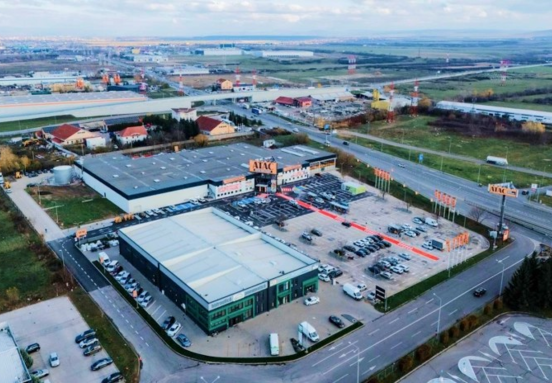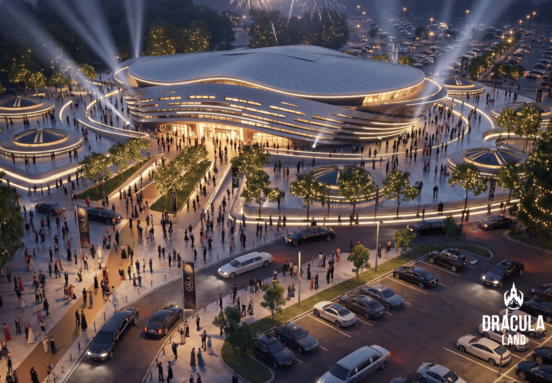A diversified energy mix, with over 50% of energy production coming from renewable sources, along with a stable and reliable power grid, are among these factors. Additionally, investments in optical fiber networks have contributed to the quality and speed of the internet, other essential factors for the efficient operation of data centres.
Access to a skilled IT workforce, competitive labour costs, and a secure cybersecurity environment aligned with European standards are also key strengths that could attract the attention of data centre developers and operators. Furthermore, Romania benefits from EU-supported digitalisation initiatives and national projects aimed at enhancing the digitalisation of the business environment and public services.
In terms of environmental factors, Romania’s location within a temperate climate helps reduce cooling costs for data centres. Moderate outdoor temperatures allow for the use of natural cooling technologies, improving energy efficiency and lowering the carbon footprint.
Land costs continue to be a critical focus for managing expenses when it comes to data center development. Although they typically represent a fraction of the total costs, elevated land prices can pose significant barriers to entry, especially in prominent markets known for large-scale deployments. The availability of land further enhances Romania’s attractiveness, offering opportunities to secure plots at competitive prices in low-risk areas.
However, despite the unprecedented growth of global data centre markets, Romania’s data centre capacity remains relatively modest. The total installed capacity is currently below 100 megawatts (MW), which is low compared to other countries in the region.
Laura Bordianu, Data Analyst Research Department Cushman & Wakefield Echinox: “Although the local market capacity is relatively limited, Romania offers a favourable entry point for international developers looking to capitalise on the advantages of an emerging market. With robust IT infrastructure, a skilled workforce, and a supportive climate, Romania has the potential to become a key hub in the regional data centre landscape. Besides Bucharest, other regions in Romania also hold significant potential for data centre investments. Cities such as Cluj-Napoca, Timisoara, and Iasi offer strong infrastructure, access to qualified talent, and advanced digital connectivity. These locations are attractive to operators seeking to expand and leverage the benefits of the nascent local market.”
Local data centre market is dominated by Romanian operators with a small average size of facilities. Currently there are 59 data centers spread across the country. The largest concentration is in Bucharest, which hosts 27 data centers. Other notable locations include Timisoara with 9 data centers, Cluj-Napoca with 8, and Brasov with 4. In Mișchii, in the Dolj Country region, Cluster Power is building the largest hyperscale data centre in the country, with a planned operational capacity of 200 MW.
One of the main factors driving the growing demand for data centre capacity is the expansion of cloud-based services. A large percentage of the total available data centre capacity in mature markets is used by cloud platforms (25% in EMEA, 40% in the Americas), however, in Romania there is no large cloud operator (Amazon, Microsoft Azure, Google) present on the market at the moment.
The global data centre industry is experiencing substantial growth, driven primarily by demand for artificial intelligence (AI), the adoption of cloud services, and digital transformation across various sectors. Tech giants such as Amazon, Google, Meta, Microsoft, and Oracle are continuously expanding their infrastructure, fuelling global demand for data centre capacity.
Data center markets in Western Europe, North America, and Asia face significant constraints, including scarce land availability, stringent sustainability regulations, increasing power costs, and power availability challenges. These factors create substantial hurdles for data center developers, operators, and investors, impacting timelines, operational costs, and investment predictability. As a result, the industry is progressively shifting attention towards secondary markets, where opportunities for sustainable growth and capacity expansion are considerably higher.
The data centre market in EMEA (Europe, the Middle East, and Africa) has recorded significant growth. The operational capacity of EMEA data center markets reached approximately 9.4 gigawatts (GW). In addition, there are projects under construction with a combined capacity of 2.9 GW across the region, along with a further 8.7 GW in various planning stages, marking an overall pipeline growth of ~16% year-on-year.
This expansion is particularly evident in primary hubs such as Frankfurt, London, Amsterdam, Paris, and Dublin (FLAPD), which collectively account for a substantial portion of the region’s data center capacity, with 4.26 GW in live capacity. London continues its EMEA market lead with 1.14 GW operational capacity. Milan is joining FLAPD with 990 MW in live and pipeline capacity.
The market is characterised by the presence of colocation providers such as Equinix, Digital Realty, NTT Global Data Centers, and Colt Data Centre Services. These companies offer extensive colocation and interconnection services across multiple European countries. In addition, hyperscale operators such as Amazon, Microsoft, Google, and Meta are investing heavily in the region, focusing on the development of large-scale facilities to support their cloud expanding and AI services.







